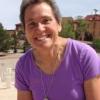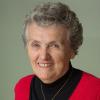Three Stats and a Map - It may sound surprising, but in the latest four-year poll by World Values Survey, results show that some men and women have lenient views on the subject of whether or not it is ever justified or permissible for a man to use physical violence against his wife.
"For it is not light that is needed, but fire; it is not the gentle shower, but thunder. We need the storm, the whirlwind, and the earthquake."
". . .[This] liberation . . . has, above all else, respect for the dignity of the person, hope for humanity's common good, and the transcendence that looks before all to God and only from God derives its hope and its strength."
I think nothing shows forth the Paschal Mystery quite like compost. It has been part of my Lenten observance this year, though it started the last weekend of January, several weeks before Ash Wednesday. While much of the rest of the country was buried by blizzard after blizzard, the sunny mild winter of the desert Southwest drew me outdoors.
The stats and facts of modern-day human trafficking are shocking. Human trafficking facilitates sexual exploitation, forced labor, domestic servitude; it leads to organ removal and forced marriage. It represents, says Comboni Missionary Sr. Gabriella Bottani, a new form of slavery. Bottani was appointed in January as the new coordinator of Talitha Kum, a Rome-based international network of religious sisters working to end human trafficking.
GSR Today - I’m sure I’m not the only one who noticed, but there was a lot of stellar religion journalism last week. if you haven’t read Nuri Vallbona’s story about Las Hermanas, drop what you’re doing and read it now. And, fingers crossed, this week will be another great one for religion journalism. We’ll at least be doing our best here at GSR.
Students at a Hindu-run school for the blind joined a nationwide outcry over the gang rape of a 74-year-old Catholic nun. The show of solidarity by the students was part of a series of demonstrations throughout India calling on authorities to hasten their investigation and charge the 10 suspects being detained in connection with incident.
This column is about religious thuggery. It's about people who are driven by a kind of primitive energy devoid of thought, philosophy, or human compassion. It is thuggery based on the purported directions of a God who they say destroys those who find spiritual wholeness differently than this God commands. It is thuggery justified by a distorted notion of religion. It is a religious thuggery that in this case distorts the very Islam out which of it claims to grow.
GSR Today - Is Ebola over or not? The Kenyan refugee camps for the South Sudanese are scorching. Smarter irrigation is taking hold in drought-stricken Tanzania.
In the last decade, a worldwide boom in mining has ravaged delicate regions of developing countries like Guatemala. Governments give concessions for the extraction of raw materials to foreign companies, especially from Canada, the United States and China, without consulting local residents, ignoring the threat to wildlife and even to water. Good market prices and new technologies are encouraging extraction in areas once considered marginal. Sr. Dani Brought, a Sister of the Adorers of the Blood of Christ, stands with the people here who are part of a growing world-wide movement of resistance against outside exploitation.




